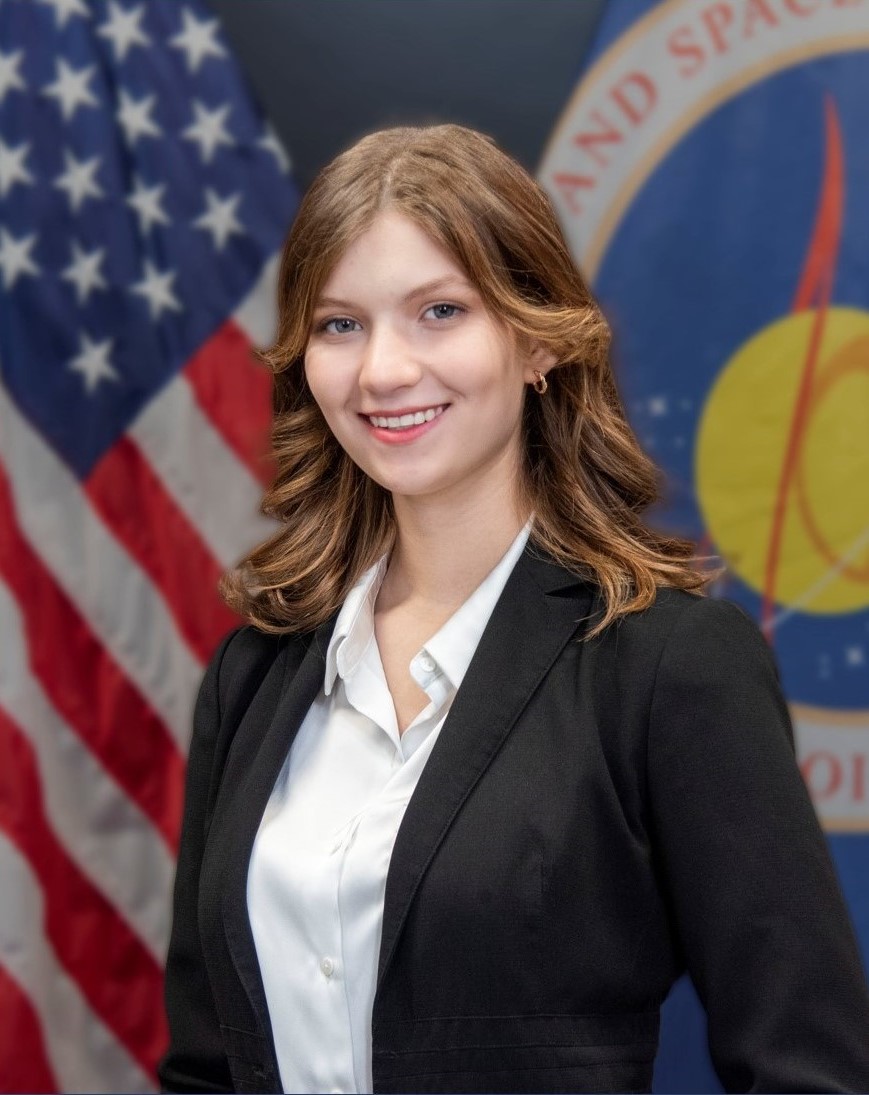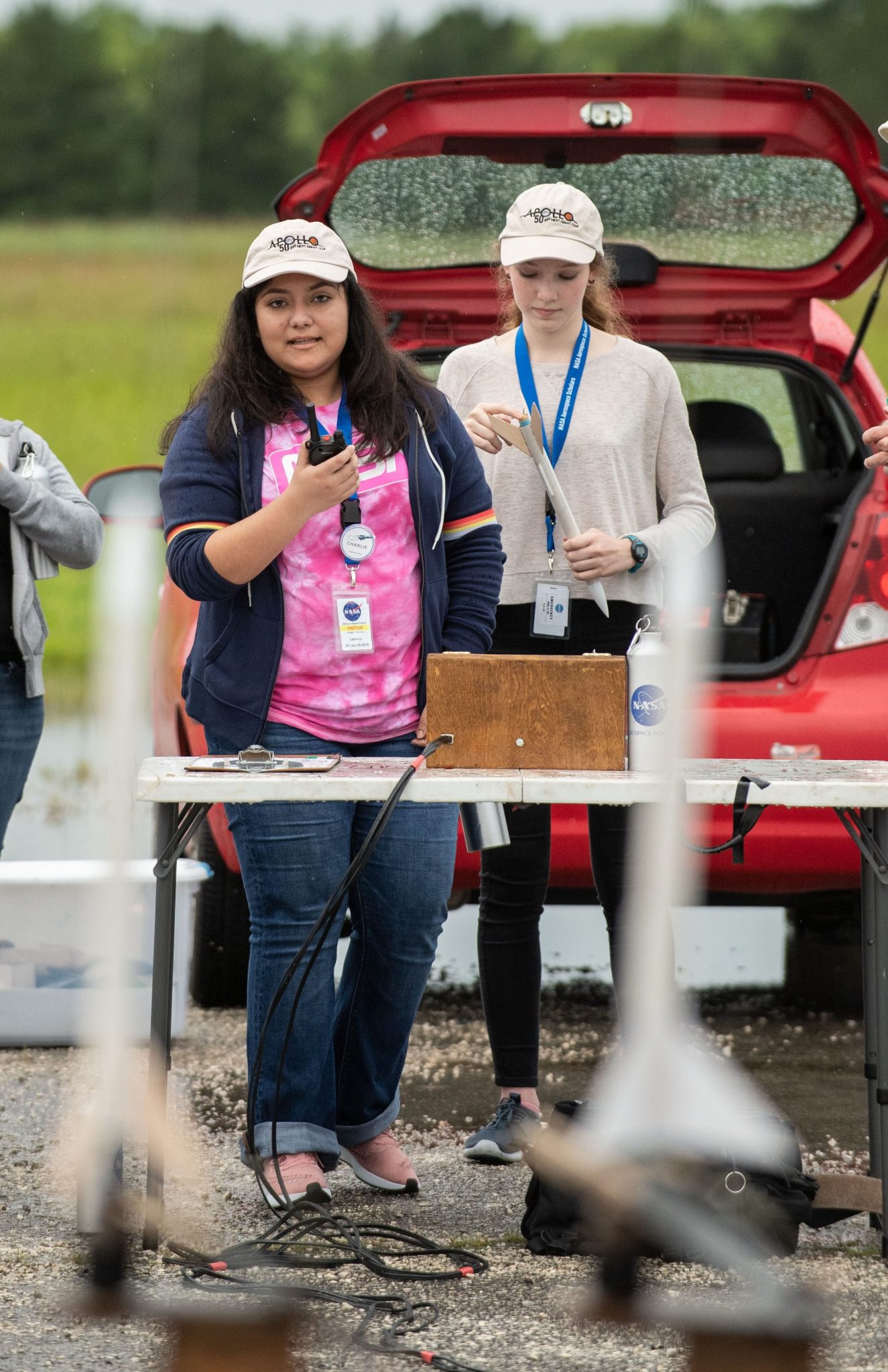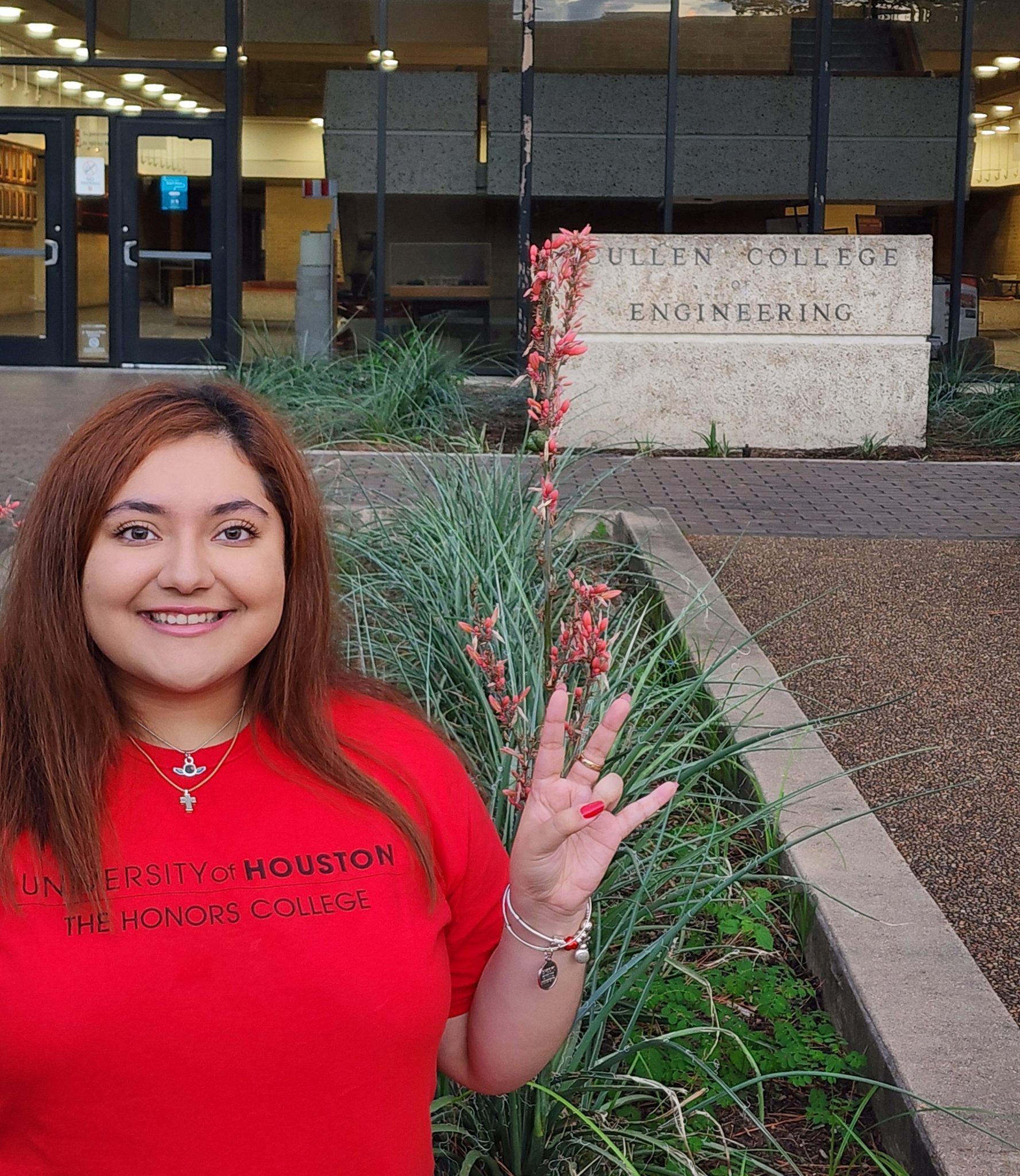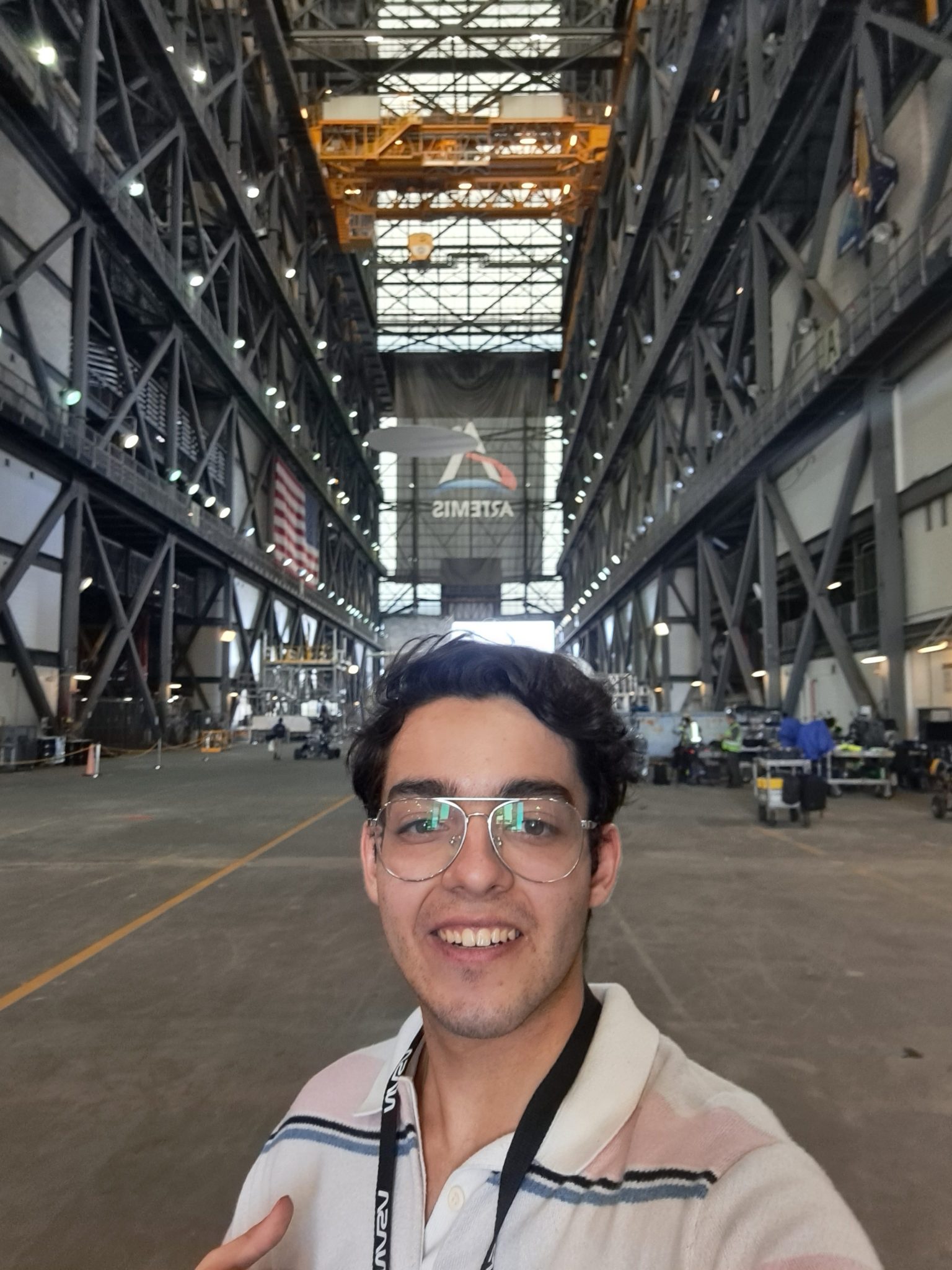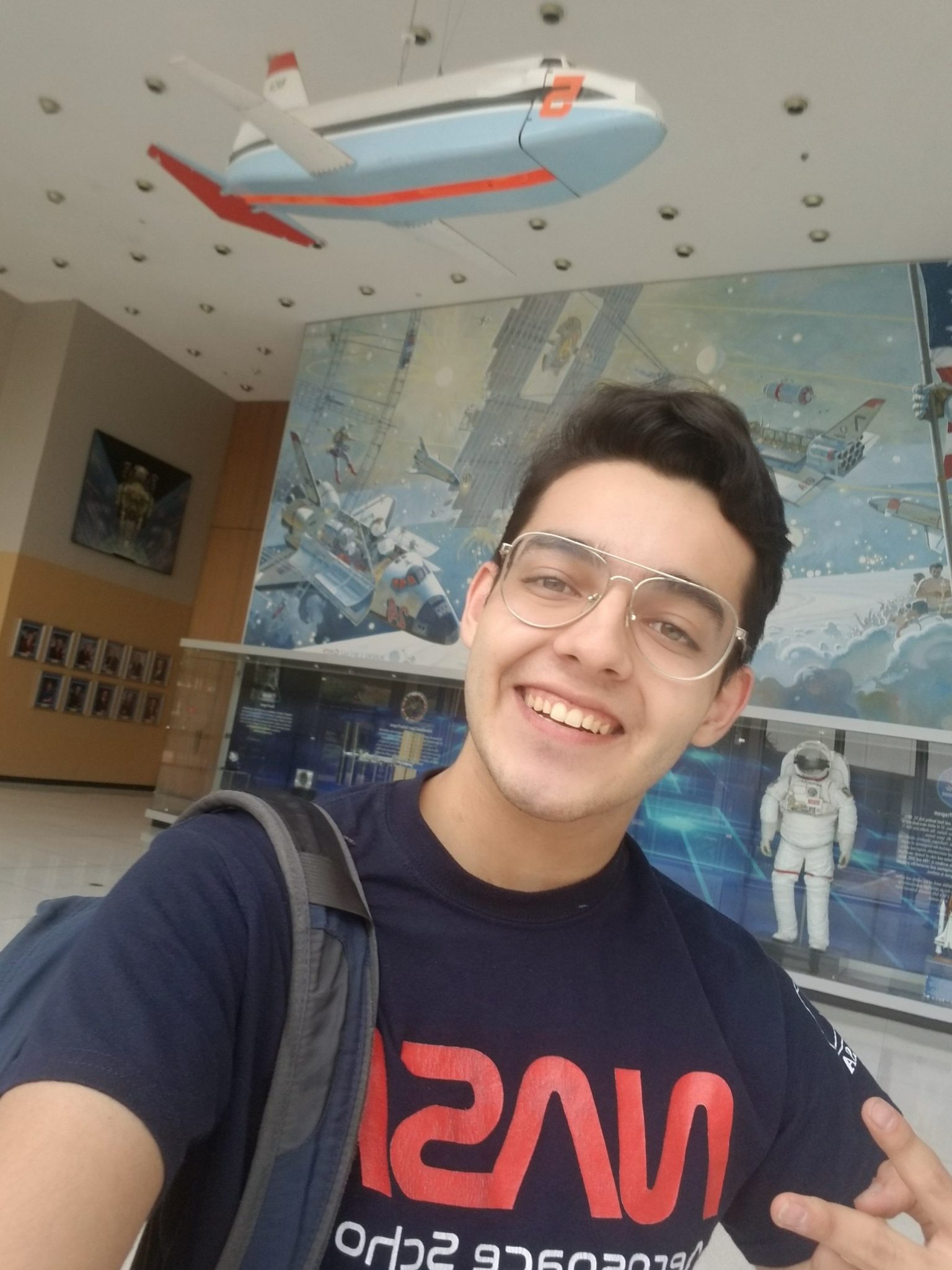To put boots on the Moon—and keep them there—will require bold thinkers ready to tackle the challenges of tomorrow.
That’s why NASA’s Office of STEM Engagement at Johnson Space Center in Houston is on a mission to empower the next generation of explorers in science, technology, engineering, and mathematics (STEM).
Through the High School Aerospace Scholars (HAS) program, Texas juniors have the opportunity to immerse themselves in space exploration through interactive learning experiences.
“HAS is such an important program because we introduce students to the multitude of careers and experiences that contribute to space exploration,” said NASA HAS Activity Manager Jakarda Varnado. “We go beyond asking students who they want to be when they grow up and ask what problems they want to solve.”
Meet Former HAS Student Madeline King
Madeline King always knew she wanted a career in STEM, with a dream of working at NASA influencing her decision to pursue a degree in Engineering.
Before joining HAS, King thought scientists mainly worked in labs and engineers focused on design. But the HAS program revealed a different reality—scientists and engineers often collaborated on interdisciplinary projects, sometimes even sharing roles.
The program broadened King’s perspective on the diverse paths a STEM degree can lead to. It showed her that careers at NASA offer opportunities across various fields and disciplines.
King said participating in HAS helped to strengthen her problem-solving skills and ability to think creatively. The program required students to tackle complex technical tasks independently, emphasizing self-directed learning. King describes HAS as fun, challenging, and engaging, which helped her excel in technical roles.
“Learning to digest and internalize this information is a skill I continue to use when getting up to speed in new groups or taking on projects outside my current skill set,” said King.
Though King joined HAS during COVID-19, which limited in-person interactions, the experience still made an impact. Her mentors also offered insights into graduate school options, helping her weigh the benefits of advanced degrees against gaining hands-on experience at NASA.
The program opened doors to internships at Johnson in the Engineering Robotics and the Avionics Systems Integration Division. Now, she is studying mechanical engineering at the University of Houston, bringing passion and experience in electronics, robotics, education, project management, and aviation.
“Early on in my internship journey, HAS shined on my resume,” she said. “It demonstrated that I already had experience with NASA’s culture, values, and mission.”
Looking forward, King envisions herself as a flight controller, contributing to both the International Space Station Program and the Artemis campaign. Driven by her passion for NASA’s mission, King is just beginning her journey and is eager to be part of the future of space exploration.
“My internships since HAS have allowed me to make small contributions to both of these missions, and I’m excited to specialize as a full-time engineer,” said King.
Meet Caroline Vergara
As a first-generation student, Caroline Vergara lacked the resources to fully explore her interests in aerospace engineering, let alone envision what that career might look like. That all changed when she was accepted into NASA’s HAS program.
“The exposure to real-world innovation ignited my desire to be part of something bigger, something that pushes the boundaries of human knowledge and capability,” she said.
Touring NASA facilities and watching engineers work on projects opened her eyes to the possibilities in STEM. Today, Vergara is a propulsion design engineering intern at United Launch Alliance, contributing to the Vulcan rocket as a Brooke Owens Fellow.
Vergara initially thought working in STEM was mostly about writing equations or running simulations but HAS showed her it is so much more. “A STEM career is about curiosity, collaboration, and the power to change the world,” she said.
During the program, Vergara joined a team of students to tackle a mission simulation project. They called themselves “Charlie and the Rocket Factory” and designed a prototype rocket together. Working with peers from all over the country showed her the power of diverse perspectives. She experienced firsthand what it was like to be part of a team with a shared vision, working toward something bigger than themselves.
Vergara also discovered her love for 3D printing and computer-aided design through HAS. She spent hours fine-tuning designs, fascinated by the process of turning digital models into physical reality.
Her experience with HAS also sparked a desire to give back. She returned to her hometown to share her story and encourage other students to pursue STEM. Partnering with Johnson Community Engagement Lead Jessica Cordero, she organized video conferences with NASA engineers on International Women in Engineering Day to inspire a new wave of students to be part of space exploration.
“The aerospace industry is entering a new space age, and we have the unique opportunity to put humans back on the Moon and explore beyond,” she said.
Her advice to the Artemis Generation is: “Go for it! You could be part of the generation that changes humanity’s destiny.”
As a mechanical engineering honors student at the University of Houston and chief engineer of Space City Rocketry, Vergara envisions contributing to the Artemis campaign and advancing NASA’s mission to explore the cosmos.
“My dream is to contribute to space exploration efforts that put humans back on the Moon and beyond, and to one day work in Mission Control Center, where I can help guide those historic missions into the future.”
Meet Iker Aguirre
For Iker Aguirre, the spark that ignited his journey toward a career in aerospace was lit by a passing conversation during his freshman year of high school. A senior classmate described the HAS program as a once-in-a-lifetime experience that cemented his passion for aerospace. That moment stayed with Aguirre, and when the opportunity arose, he did not hesitate to apply.
“HAS showed me that in order to accomplish something as complex as Artemis, you need a well-rounded set of teams and individuals,” he said. “You don’t need to study aerospace to be in the aerospace industry!”
In 2020, Aguirre participated during the remote-only version of HAS, but he recalls that the program still gave him a much deeper understanding of the spaceflight industry.
Despite already being interested in aerospace, Aguirre says HAS broadened his horizons, showing him the diverse pathways into the field. Through collaborative projects with peers across Texas, he discovered that solving the challenges of space exploration requires more than just aerospace engineers.
The program’s emphasis on teamwork left a lasting impression. During his time with HAS, Aguirre found himself working alongside students from different backgrounds, each bringing unique perspectives to problem-solving. It introduced him to dedicated and passionate people with various personalities and cultures who all shared similar dreams and aspirations as him.
Aguirre credits HAS with not only refining his technical skills but also shaping his approach to innovation and teamwork. That experience paid off as he moved through his academic and professional journey, including Pathways program internships with NASA’s Johnson Space Center in Houston and Marshall Space Flight Center in Huntsville, Alabama.
“Getting connections at NASA through HAS helped me open many doors so far,” said Aguirre. “I met many good friends through HAS and my internship at Johnson, which I value to this day.”
Now pursuing a degree in rocket propulsion, with a focus on turbomachinery design, Aguirre remains committed to advancing space exploration. He hopes to contribute to humanity’s mobility in space, tackling challenges in rocket engine feed systems.
Through HAS, Aguirre found not just an educational program, but a community and a purpose. “My journey will forever be interlinked with NASA’s core values of benefiting humanity on and off the Earth,” he said. “I hope to inspire others just as much as the people who inspired me through my journey!”
Article by:Source Sumer Loggins


